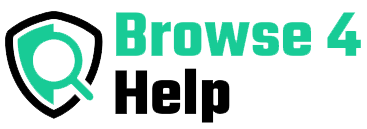Have you ever felt like your news feed is reading you instead of the other way around?
You’re not alone. With AI algorithms choosing what we see every day, it’s easy to lose control over the information we consume. That’s where manual news feed browsing tips come in. This guide shows you how to take back control, choose your own sources, and create a healthier, more balanced digital reading habit all without relying on algorithmic feeds.
Algorithms are convenient, but they come with problems. They are designed to keep you scrolling, not necessarily to inform you fairly. Here’s why that matters:
-
Filter bubbles: You only see news that confirms your beliefs.
-
Misinformation: Viral doesn’t always mean accurate.
-
Overload: You may feel bombarded with irrelevant or sensational content.
-
Lack of diversity: You miss out on global, niche, or alternative perspectives.
A 2023 Pew Research study found that 62% of U.S. adults say they often feel overwhelmed by the amount of news available, especially when it’s curated by social media or search algorithms.
My Personal Wake Up Call: Too Much of the Same News
As a freelance tech writer, I realized that I was reading the same five news websites, recommended by Google Discover, over and over. I didn’t know what I was missing until I manually browsed news sources from Europe and Asia. That single habit shift helped me write better, think broader, and trust my information more.
You can do the same with just a few tools and mindset shifts.
Algorithm vs Manual Browsing: A Quick Comparison
| Feature | Algorithmic Feeds | Manual News Browsing |
|---|---|---|
| Control | Low Decided by platform | High You pick the sources |
| Diversity of News | Limited Based on history | Broad You explore manually |
| Bias Reduction | Low Often echo chambers | High You choose both sides |
| Privacy | Low Tracks behavior | High You browse anonymously |
| Customization Flexibility | Limited to app settings | Unlimited with tools & folders |
Best Tools to Curate Your Own News Feed Manually
Manual doesn’t mean old-fashioned. Let’s explore easy, modern tools that help you ditch the algorithm and take control:
1. RSS Feed Readers (Like Feedly or Inoreader)
These allow you to follow specific sites or authors without ads or suggestions. You get clean, chronological content.
-
Add your favorite tech blogs, newspapers, niche writers.
-
Organize them by topic: Politics, Health, Innovation, Local, etc.
-
No algorithm pushing headlines you read what you chose.
2. Bookmark Folders (Browser-Based Method)
Create folders in your browser like “Morning Reads,” “Science Sources,” or “Opinion & Analysis.”
-
Set a habit of opening these each day instead of social media.
-
This method is perfect for students and writers doing daily research.
3. Newsletter Subscriptions
Many reputable journalists and platforms offer free newsletters.
-
Use a dedicated email address or folder for these.
-
Examples: Axios, The Skimm, Morning Brew, TLDR Newsletter.
-
Bonus: These are written by humans, not algorithms.
4. Saved Google Alerts
Create custom alerts with specific keywords like “renewable energy Africa” or “AI in education.”
-
You get notified only when new, relevant stories appear.
-
Great for niche interests or professional research.
5. Reddit or Hacker News (With Manual Filters)
These platforms let you follow subreddits or tags. But don’t rely on homepage feeds.
-
Manually search and sort by “new” or “top this week.”
-
Avoid letting upvotes decide what’s “news.”
Building Your Custom Feed: A Step-by-Step Plan
Here’s how to build your own manual news feed in under 30 minutes:
#Step 1: Identify Your Categories
Think like a newspaper editor. What sections do you care about?
-
Tech, Science, Global Affairs, Local News, Finance, Education, Opinion.
#Step 2: Pick 3 Sources for Each Category
For example:
Tech: The Verge, TechCrunch, Wired
Global News: Al Jazeera, BBC, France 24
Finance: Bloomberg, Financial Times, CNBC
Mix mainstream, niche, and alternative voices.
#Step 3: Choose a Tool
Use Feedly if you want automation without bias, or simply save URLs in your browser folder.
#Step 4: Create a Daily Habit
-
Set a 15-minute window in the morning or evening.
-
Stick to your own sources, not what Facebook or YouTube recommends.
Common Struggles (and How to Overcome Them)
“It takes too long!”
Solution: Start with just 5 websites. You’ll likely read less but absorb more.
“I forget to check my sources.”
Solution: Set a daily reminder or open browser folder at startup.
“What if I miss big headlines?”
Solution: Subscribe to a general-purpose daily email like Morning Brew. Use it only for top-line awareness.
Real-Life Use Case: A Student’s Balanced News Routine
Name: Rachel, 21, journalism student
Problem: Felt overwhelmed by biased Twitter threads and TikTok news.
Solution:
-
Subscribed to The Daily (NYT) podcast.
-
Uses Feedly to track environmental news globally.
-
Checks her bookmarks once every evening.
Result: Better class discussions, stronger research papers, and a noticeable improvement in mental clarity.
Expert Insights: What the Pros Say
“Algorithmic feeds are designed to maximize engagement, not accuracy. Manual curation allows for intentionality and healthier information diets.”
— Tristan Harris, Center for Humane Technology
“RSS is still one of the most powerful tools for information control. If you don’t use it, you’re giving that control to someone else.”
— Cal Newport, Author of Digital Minimalism
Quick Tips for Smarter Manual Browsing
-
Use Incognito for unbiased search results
-
Follow journalists directly on their personal blogs or Substack
-
Keep your feed fresh by reviewing sources monthly
-
Add local news sources for balanced global-local perspective
-
Diversify by region, not just topic (e.g., follow Asian, African, Latin American news)
Pros and Cons of Manual News Feed Browsing
| Pros | Cons |
|---|---|
| Total control over what you read | Requires more setup time initially |
| Reduces misinformation | No instant dopamine from endless scroll |
| Improves mental clarity | Must build own reading habit |
| Great for research and depth | Fewer “breaking news” updates |
Your Feed, Your Rules
Algorithms are not evil they’re just not you. By learning a few manual news feed browsing tips, you give yourself the power to learn smarter, stay ahead, and escape the attention traps designed by big tech.
This guide is your blueprint to building a healthier relationship with information. Whether you’re a tech enthusiast, an aspiring writer, or a busy student your news diet should be something you cook, not what’s served by an AI chef.



